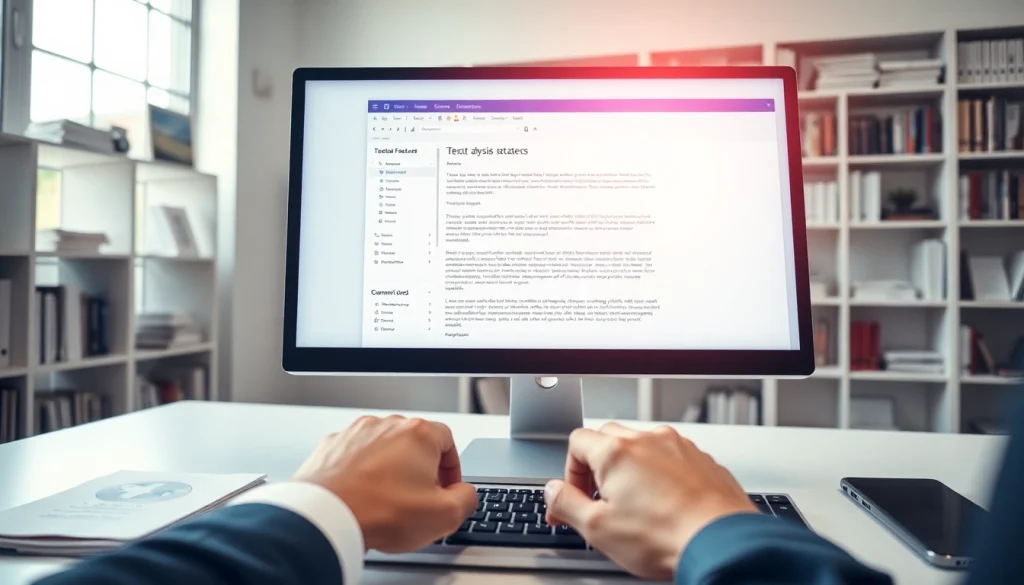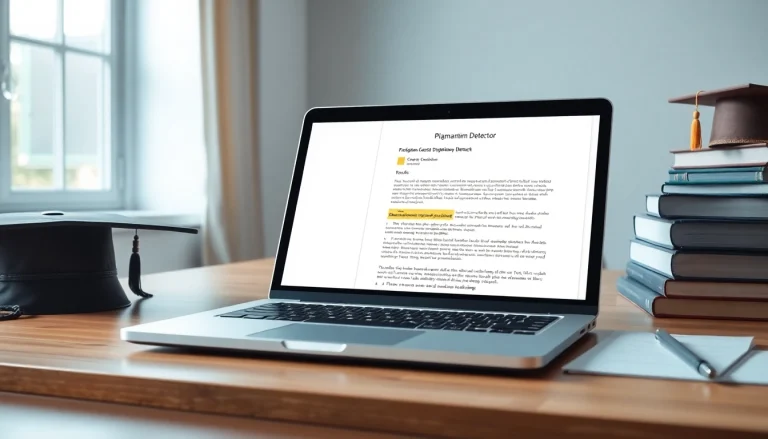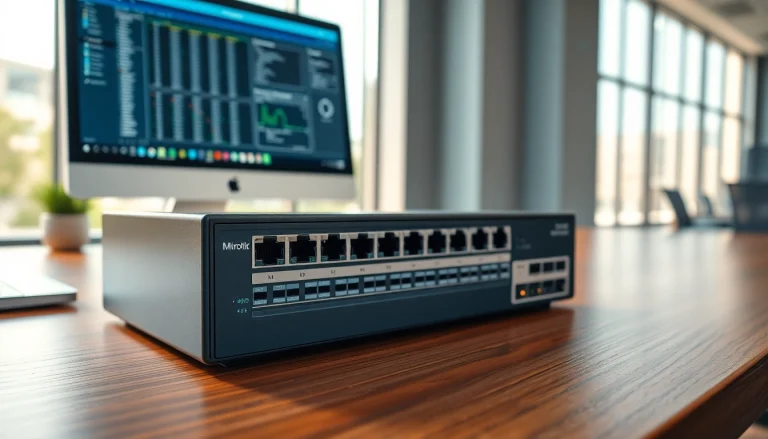
Understanding the Importance of a Plagiarism Detector
In an era where information is readily accessible at our fingertips, the ability to produce original content has never been more crucial. Whether you’re a student drafting an academic paper, a professional writing reports, or a content creator generating articles, ensuring the authenticity of your work is paramount. A plagiarism detector serves as an essential tool in this pursuit, allowing writers to maintain integrity and uphold standards of originality in their work.
What is a Plagiarism Detector?
A plagiarism detector is a software tool designed to identify instances of copied content in a piece of writing. It works by scanning and analyzing text against a vast database of existing works, comparing phrases and structures to find similarities. When discrepancies are detected, the tool reports on the match percentage, enabling users to determine if parts of their content are unoriginal.
Why Academic Integrity Matters
Academic integrity is the foundation of scholarly work, promoting a culture of honesty within educational institutions. Plagiarism not only undermines the learning process but can also lead to severe academic penalties, including expulsion. Upholding academic integrity involves more than avoiding plagiarism; it fosters critical thinking skills and encourages students to engage genuinely with their learning material.
Common Misconceptions about Plagiarism Detectors
Despite their utility, several misconceptions cloud the perception of plagiarism detectors. Firstly, many believe these tools are foolproof. However, while they offer valuable insights, no detector is 100% accurate. Secondly, some users think that using a detection tool absolves them of the responsibility to create original content. In reality, these tools are best used as a supplementary resource, not a primary reliance.
How Plagiarism Detectors Work
The Technology Behind Plagiarism Detection
At the core of plagiarism detection technology lies a combination of algorithms, database access, and comparison processes. The software initially breaks down submitted texts into smaller segments, often word pairs or phrases, and then compares these against large databases of academic papers, articles, and web content.
Advanced detectors employ machine learning algorithms which improve their accuracy over time, learning from user interactions and feedback to reduce false positives.
Algorithms and Databases Used
Creating an effective plagiarism detector requires significant investment in technology. The effectiveness of these tools hinges on the algorithms they employ, which can vary widely. Some detectors, like Turnitin, focus primarily on academic content, while others, like Grammarly, cover a broader range of internet publications. Users should be aware of the strengths and limitations of the database each detector accesses to choose the right tool for their specific needs.
Limitations of Plagiarism Detection Tools
No technology is perfect. Plagiarism detectors often struggle with certain types of content, such as paraphrased text or content written in a unique style. Additionally, they may not recognize sources that are not included in their database, leading to potential inaccuracies. Understanding these limitations is key to interpreting results correctly.
Finding the Right Plagiarism Detector for Your Needs
Top Free and Premium Plagiarism Detectors
Choosing a plagiarism detector can be overwhelming given the various options available. Some of the most popular tools include:
- Turnitin: Widely used in academic institutions, offers robust reporting capabilities.
- Grammarly: While primarily a grammar checker, it includes a reliable plagiarism detection feature.
- DupliChecker: A free tool that provides quick plagiarism checks, though may lack depth.
- PapersOwl: Known for being user-friendly with a strong AI-powered detection capability.
Comparison of Features and Pricing
When selecting a plagiarism detector, consider the features offered in each plan. Many tools provide free basic checks but require subscriptions for advanced features such as detailed reports or integrations with other writing tools. Compare pricing structures and consider what features are essential for your writing requirements.
Choosing a Plagiarism Detector Based on Document Type
Different contexts require different tools. Academic papers may need heavy-duty detectors like Turnitin or Grammarly, which cater to extensive databases and provide detailed originality reports. For casual writers or professionals needing quick checks, free tools like DupliChecker may suffice. Always align tool capabilities with the specific type of document you’re working on.
Best Practices for Using a Plagiarism Detector
Preparing Your Text for Analysis
Before you submit your text for a plagiarism check, ensure it is complete and presents your ideas clearly. Many detectors require fully formed paragraphs to provide optimal results. Additionally, consider formatting issues—avoid using special characters or unusual spacing that might affect matching accuracy.
Interpreting Plagiarism Reports
Receiving a plagiarism report can be daunting, especially if the percentage of similarity is high. Take time to understand the details of the report. Most plagiarism detectors guide you to the specific passages that match and suggest potential source material. Use this to revise your work carefully, focusing on the identified segments.
Steps to Revise Your Work
Effective revision begins with identifying plagiarized sections in your report. To address this:
- Rewrite the identified areas in your own words, ensuring original thought processes are employed.
- Integrate proper citations for any ideas that remain similar to the source material.
- Run your revised work through the detector again to confirm that all issues have been resolved.
Future Trends in Plagiarism Detection Technology
AI and Machine Learning in Plagiarism Detection
The future of plagiarism detection is set to be transformative, largely due to advancements in artificial intelligence and machine learning. These technologies will enhance the ability of plagiarism detectors to identify not only direct copies but also paraphrased and poorly attributed content, making them smarter over time.
Emerging Tools and Technologies
As technology evolves, so will the tools available for plagiarism detection. New applications are emerging that integrate AI to provide a more nuanced understanding of text originality. These tools not only check for similarity but can also assess the style and thematic elements of writing, providing comprehensive feedback to enhance creativity.
The Role of Educators and Institutions
Finally, as plagiarism detection technologies evolve, educators play an important role in shaping student understanding of originality and authenticity. Institutions can help by integrating plagiarism detection into curricula and teaching best practices for academic writing, thereby reinforcing the importance of integrity in scholarship.






